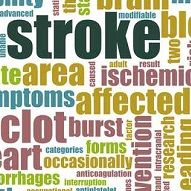Article
Stroke Can Be Caused by Gut Bug
Author(s):
In a case reported in a poster session, a team describes a patient whose infection with E. cloacae caused a stroke.

Enterobacter cloacae is a common bacterium that tends to contaminate hospital devices and is found in the human gut.
In a study due to be presented as an abstract in a poster session April 21 at the American Academy of Neurology meeting in Washington, DC. Two Jacksonville, FL researchers report on their attempt to find the organism’s relationship to ischemic stroke following endocarditis.
Robert K Mannel, MD, and Scott Silliman, MD, reported on the case of 57 year old man admitted to their hospital’s neurology service for evaluation of diplopia and vertigo that had been present for 1 day. He had a fever of 102.4 degrees F and blood cultures showed E. cloacae. An MRI of his brain showed scattered foci of acute infarction in both cerebral hemispheres sparing the brainstem and posterior fossa. A transesophageal echocardiogram showed he had a perivalvular abscess on his aortic valve.
Though the researchers’ review of the literature turned up only 12 cases of E. cloacae infectious endocarditis, including 1 patient with a cerebral infarction as a result of septic emboli, their case showed that E. cloacae infection could show up as an ischemic stroke.
“This is the first case which demonstrates that ischemic stroke can be the presenting clinical event of E. cloacae endocarditis,” they wrote. “Clinicians who provide acute care to patients with stroke should be aware of this rare cause of embolic brain infarction”
That is important, they said, because early diagnosis of E. cloacae endocarditis and appropriate medical management can promote full neurological recovery in these patients.




